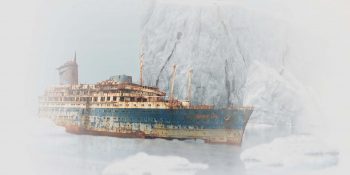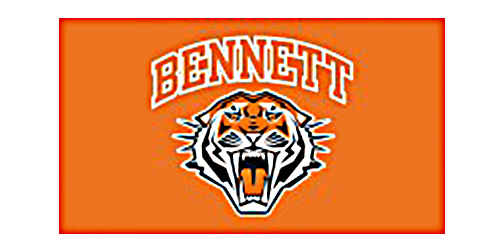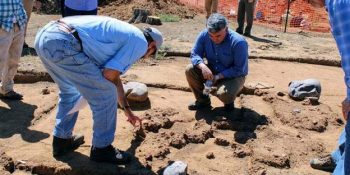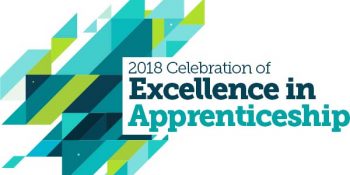In the field of graphic design, Colorado State University is best known around the world as the home of the Colorado International Invitational Poster Exhibition.
Held every two years, the CIIPE returns to various venues on campus Sept. 20 through Nov. 1 for its 21st edition. The show of work from the world’s most distinguished poster artists and designers was created in the late 1970s by three CSU faculty members in the Department of Art and Art History who had begun attending poster exhibitions in other countries.
A companion satellite show, “RED (AGAIN),” opens Oct. 17 in the Nancy Richardson Design Center and is a powerful visual representation of the Soviet Union’s final years. This exhibition was compiled in the 1980s by graphic designer and CSU alumnus Ron Miriello and CIIPE co-founder Phil Risbeck, now a professor emeritus.
Schedule
CIIPE kicks off Sept. 19 with a 5 p.m. lecture at the Gregory Allicar Museum of Art by honor laureate and exhibition judge Pekka Loiri. The eminent designer and professor at the University of Art and Design in Helsinki, who is considered a pioneer in Finnish poster art, will be announcing his three winners and three honorable mentions at the outset of the exhibition.
Loiri, whose own work will be on display at the Allicar in the University Center for the Arts through Dec. 14, will also speak to graphic design classes during his weeklong visit to CSU. He has regularly had his work displayed in CIIPE.
The next evening, posters from the artists selected for the exhibition will be unveiled simultaneously at 7 p.m. in the Curfman Gallery at the Lory Student Center and the Hatton Gallery in the Visual Arts Building. In the LSC Theatre, following a 6 p.m. social hour, opening comments and a ribbon-cutting are set to begin at 7 p.m. Posters from the exhibition, as well as a catalog of all displayed works, will be available for sale at the opening.
CSU faculty organizers Jason Frazier and John Gravdahl say they will have more than 70 artists represented in this year’s show. The two strive to attract a group that is diverse in terms of geography, ethnicity and gender, among other measures.
They note that the medium of the poster has historically been used as an inexpensive way to communicate with the public in certain countries, often in a guerrilla/punk fashion.
“But there are also amazing technical achievements that speak to the fine art aspect of this field,” Frazier said, adding that the rise of social media doesn’t portend the death of the poster. “In a lot of ways, Instagram is a poster-friendly medium.”
“The kind of posters we’re talking about are designed to be part of our common daily experiences centered around political, cultural or commercial commentary,” Gravdahl said. “They originally brought art to the street quickly and efficiently. New media always finds a way to integrate the values of great poster art, and the work in the CIIPE shows off those values in abundance. From a distance or close-up, the physicality of the experience surprises many viewers.”
History of CIIPE
The poster exhibition, which quickly built an international reputation, was born when Risbeck and two of his colleagues in the department, Bob Coonts and the late John Sorbie, began getting their posters accepted into established European exhibitions. Thanks to some funding from the University, the three attended the 1978 Warsaw show, where they all had work displayed. Risbeck recalls they got a warm welcome in Poland, support from fellow artists, and a crash course in how to host a poster exhibition.
“We were met with great jubilation, and we developed lifelong relationships with artists from places like Moscow and Mexico City,” Risbeck said. “We had contact with Russian designers, which wasn’t very easy at the beginning because of the Cold War.”
The connections they made as they attended other shows around the globe became key to starting their own exhibition. They invited many of the artists they met to attend and display their work in CIIPE, and even serve as jurors.
‘Valuable teaching tool’
“We have friends all over the world because of our show,” Risbeck said, adding that those connections and foreign artists’ visits benefitted CSU as well. “We wanted to bring the world’s very best graphic design work to the students of CSU, and it’s been a very valuable teaching tool. There wasn’t another school in the country that had this at the time. We were able to introduce our students to these people, and occasionally our students could visit an artist’s studio in Frankfurt, Germany, for example. It opened doors for them and gave them confidence that their field was quite interesting and rewarding.”
Risbeck said CIIPE initially had three exhibition jurors from the U.S. and abroad, and it quickly became clear that Fort Collins was a desirable destination for them and their guests. Designer and Academy Award-winning filmmaker Saul Bass was a CIIPE juror one year; renowned graphic artist Shigeo Fukuda was an honor laureate another.
“We found that to our liking, and people enjoyed coming to Colorado,” he said, adding that other co-founders of CIIPE included fellow members of the CSU Fine Arts Series Committee: Mims Harris, Jack Curfman and the late Shelton Stanfill.
Sorbie, Risbeck and Coonts were also becoming internationally known for a split-fountain printing technique that was groundbreaking at the time. Their exhibition began getting coverage in trade publications from countries such as Germany, Switzerland and Japan, as it was the first invitational exhibition of its kind in the Western Hemisphere.
Colorful memories
“That’s been a neat experience for me, to get to know these artists, our counterparts in other parts of the world,” Coonts said, adding that Bass told him “we should be really proud of what we have done in Fort Collins, Colorado, because it could just as easily be in Los Angeles or New York.”
When Fukuda visited, Coonts recalls that his teenage sons and a nephew drove the artist around the area, even up to Horsetooth Reservoir.
“It gave him a little different slice of our life in America that he wouldn’t have gotten otherwise,” Coonts said, adding that organizers were a bit worried about the joy ride with such a prominent designer — especially when the group ended up at the Electric Stampede and Fukuda rode the bar’s mechanical bull. “There was concern about that too. He could’ve broken his neck or something.”
Another time, Coonts said he and Risbeck were attending a Mexico City exhibition that included their work, and they decided to go to a bullfight. They couldn’t get seating together, and neither spoke Spanish. As Coonts was climbing the steep stairs of the arena alone, he asked a man for help finding his seat.
The man replied, “Sorry, buddy, I’m from Ohio.”
Posters as political messages
The artists chosen for the CSU show, who have always decided which of their posters to submit, were making works that dealt with the issues of their time, from world peace to AIDS.
“The tragedies and joys of the world were represented in those posters,” Risbeck said, adding that Morgan Library has an impressive archive of CIIPE posters and catalogs that is now accessible online.
“For me, a good poster doesn’t need any words — it immediately delivers its message,” Coonts added. “The best posters, in my mind, are the ones that communicate without a lot of language. The visuals are the strength that easily conveys the concept.”
Coonts recalls CIIPE as being the brainchild of Risbeck and Sorbie, who was one of his professors when Coonts was a CSU graphic design student in the early 1960s. They invited him to become involved, and during the early years, Coonts designed the catalog, while Risbeck and Sorbie took turns designing the primary poster art used to promote each show.
“It’s been quite a journey,” Coonts said. “We started doing it by the seat of our pants. But 21 shows, that’s pretty amazing. We’re on the map; we’re comparable to the best shows around the world.”
CIIPE is supported by the Lilla B. Morgan Memorial Endowment for the Arts, the Department of Art and Art History, the College of Liberal Arts dean’s office and the Lory Student Center Arts Program. For more information, visit https://col.st/qo9pT. To donate to CIIPE, visit http://c-fund.us/mr2.
SPREAD THE NEWS
COMMENT, Like, Follow & SHARE @I70Scout
CURRENT EDITION
WEATHER & TRAFFIC PUZZLES RECENT NEWS ADVERTISE WITH US






